Nano impregnation for tiles and joints
Nanotol creates an invisible protective layer
The impregnation reduces the adhesion of dirt and creates an easy-to-clean surface.
Nanotol creates an invisible protective layer
The impregnation reduces the adhesion of dirt and creates an easy-to-clean surface.
Nano impregnation for tiles and joints
DIY - Nano impregnation for tiles and joints
Unglazed tiles, e.g. terracotta or natural stone, have an open-pored surface that gets dirty quickly and is difficult to clean. Dirt is usually washed into the pores by water. Nanotol is an invisible water-repellent impregnation for stone tiles that can absorb water. Nanotol has strong non-stick properties and reduces the adhesion of dirt to the tile surface and the mineral grout!
Nanotol Protector for mineral surfaces is highly efficient, economical, solvent-free and odourless and therefore great for application indoors and ourdoors.


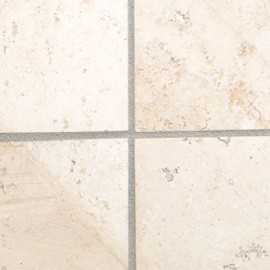




Nanotol Protector for mineral surfaces
different sizes
Suitble for
- Tiles made of natural stone, terracotta
- Stoneware with rough surface
- Stone slabs, granite, basalt
- Mineral joints and grouts
A product for all water-absorbing mineral surfaces.
Nanotol nano-coated tiles and joints remain new for longer because dirt is repelled and lime adhesion is prevented.
Easy to apply
- No solvents, no odor
- Spray on the clean surface
- Allow to dry for 24 hours
- DONE
Coating with Nanotol Protector for mineral surfaces is quick and easy.
Water and dirt repellent
Less lime and dirt adhesion.
Nanotol penetrates deep into the tile and coats the inside of the pores with nanoparticles. Water runs off before it can penetrate or dry.
invisible
No optical change of the surface.
The tile looks like before. No layer formation on the tile surface.
breathable and resistant
No waterlogging.
The tile remains breathable, no waterlogging under the tile. Chemical resistant, solvent-free and odorless.
Protection from lime
Less water on the tile leads to less lime .
Less water dries on the tile or grout. Therefore, the lime adhesion is reduced.
Dirty tile joints? Here is the solution!
-
Clean with Nanotol Cleaner Concentrate Household
The concentrate is diluted, then sprayed on and worked in with a brush. Then the surfactants need about 30 seconds to chemically dissolve dirt. Finally the dirt can be picked up and removed with wiping systems. After drying, the joints are significantly lighter. Please try it in a hidden place.
-
Nano-coat with Nanotol Protector for mineral surfaces
After coating, liquids no longer penetrate the pores. So if, for example, a drink falls down, you can pick up the liquid without it seeping in. This prevents deep soiling. Future cleaning will be quicker and easier because dried dirt is only on top.
The result: Long-term protection against new soiling and significantly easier cleaning.
Nanotol Protector for mineral surfaces in various sizes
The Protector can be used universally on all open-pored stones and its mineral paint. The only prerequisite is that water can penetrate so that the nano-impregnation can get into the stone. Depending on the size of the surface to be impregnated, we therefore offer different sizes.

Depending on absorbency, sufficient for approx. 20 qm
-
Depending on absorbency, sufficient for approx. 100 qm
Depending on absorbency, sufficient for approx. 500 qm


How to nano-coat balcony, terrace and other stone floors with Nanotol Protector for mineral surfaces
These steps are necessary
- Thoroughly clean the tile and the grout and completely remove the dirt and also the residue of the cleaning agent. Ideal cleaning product: Nanotol Household Cleaner.
- Allow tile and grout to dry completely after cleaning.
- Spray Nanotol Protector for mineral surfaces evenly on the clean surface. Repeat this while the surface is still wet (wet on wet) to reach any imperfections. 1 Liter is enough for roughly 20 qm.
- Allow the nano-coating to dry and cure for 24 hours. During this time it should not rain.
Product properties
- high hydrophobicity + oleophobicity
- strong anti-adhesion properties
- easy-to-clean effect for deposits of airborne contaminants
- invisible (layer thickness: 100 to 150 nm)
- solvent-free and odorless
- chemical resistant
- curing at room temperature. no additional energy or UV light required
- resistant to high-pressure cleaning (50 to 60 bar)
- high efficiency due to economical consumption
- high temperature resistance and UV stability
- absolute frost resistance
- no cracking due to ice
- very strong reduction of moss and fungus formation
Roof tiles, facades, paving stones, tiles, balcony, terrace or garage become water and dirt repellent

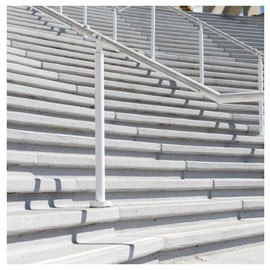
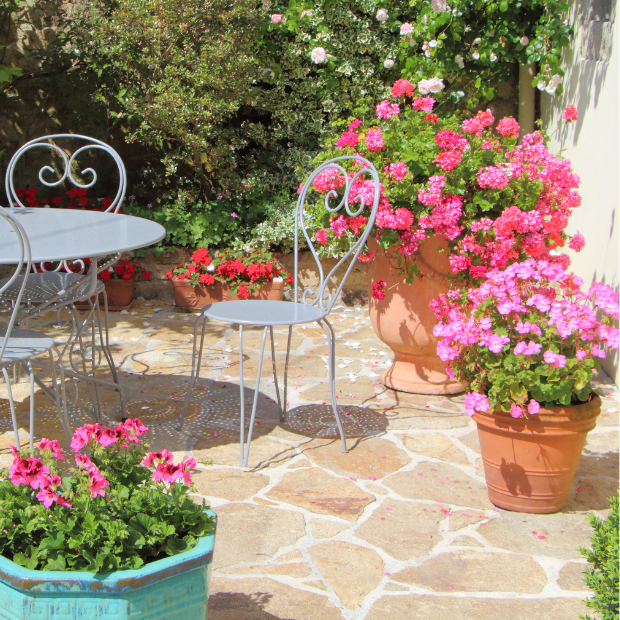





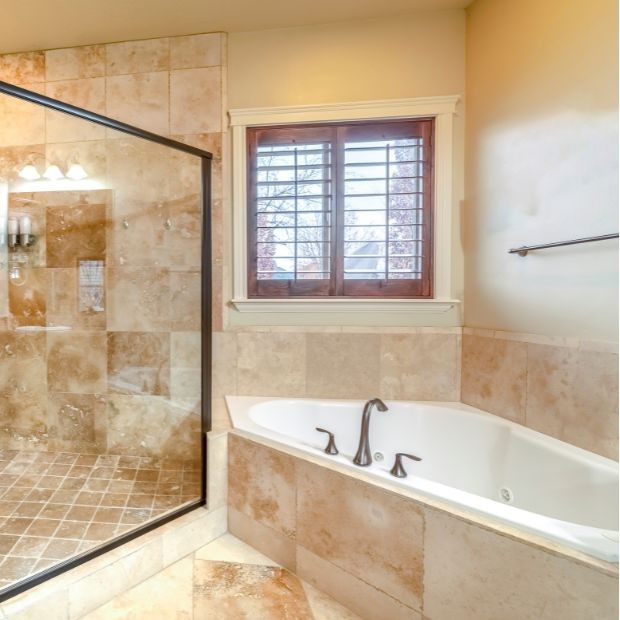



More interesting things to read about our Protector for mineral surfaces
How can I find out if Nanotol Protector for mineral surfaces is suitable for my surface?
There is a simple drop test to check this out:
- drop water on the surface you want to protect
- wait and see if the water can penetrate
- if the water does not penetrate on its own, you can apply a little pressure (sponge, cloth, brush).
If the surface has absorbed the water, then Nanotol Protector for mineral surfaces can also penetrate and attach itself. You can nano-coat your surface with Nanotol Protector for mineral surfaces.
Nanotol is not suitable if the water could not penetrate. There might be already a coating on the surface or the surface is closed, e.g. glazed, so it cannot absorb water. In this case, Nanotol, too, can not penetrate and would not work.
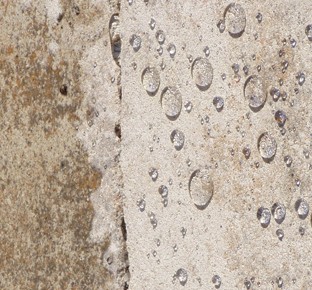
Nanotol Protector for mineral surfaces has been tested and certified
- It meets the requirements of the § 30 und 31 LFGB* and the European Regulation (EC) No.: 1935/2004.
* German Food, Article and Feed Law Book. The test confirms that surfaces coated with Nanotol do not emit any substances and are harmless in direct contact with foodstuffs.

Can you use Nanotol to seal a wall or floor, e.g. garage or terrace?
When a floor has been sealed, it is often meant that water can no longer penetrate afterwards. Colloquially, "sealing" in the construction industry is something different than, for example, impregnation. A sealed floor is then closed against the penetration of water.
Nanotol is not suitable for that!
Nanotol nano-coating penetrates deep into the stone and covers the inside of individual pores with nanoparticles. After drying, the nanoparticles remain and coat each individual pore of the stone from the inside.
- Rainwater runs off very easily when the stone is sloped.
- However, the surface remains breathable and dries quickly.
- Moss growth is reduced due to the lack of moisture.
- Moisture in masonry is reduced
- Mold growth is reduced.
BUT: If you want to completely prevent water from penetrating even when puddles form, you need a protective sealing layer and not a nano-coating.

General questions about Nanotol
Is it possible to use this nano coating against water penetration?
No, Nanotol for mineral surfaces cannot be used against water penetration.
How often do I have to repeat the nano-coating of tiles?
Abrasion of Nanotol mainly occurs in highly frequented areas, e.g. directly at a door. Nano-impregnation should be repeated regularly, e.g. every 3-4 years. All other surfaces remain permanently coated. Refreshing is only necessary when the effect noticeably wears off. This is usually the case after more than 10 years.
Nanotol is resistant to chemicals and high-pressure cleaners. You can clean the floor after impregnation with Nanotol in the same way as you did before. Nanotol has strong non-stick properties. Therefore, cleaning after coating will be much faster and easier.
Do I have to follow safety precautions or does the Nanotol impregnation smell?
No, no safety precautions are necessary. Nanotol impregnation does not smell and can not cause health problems.
